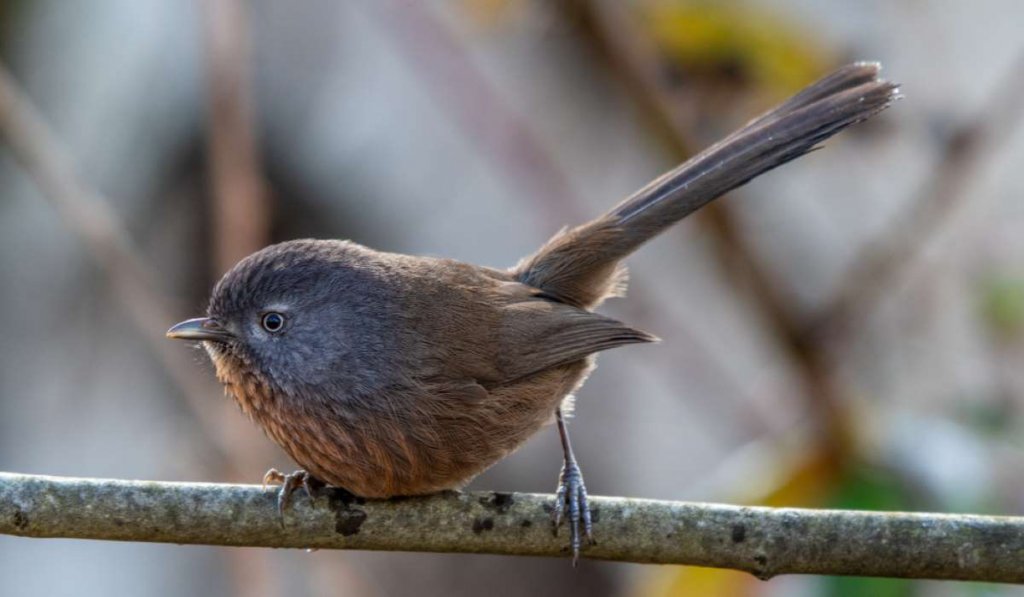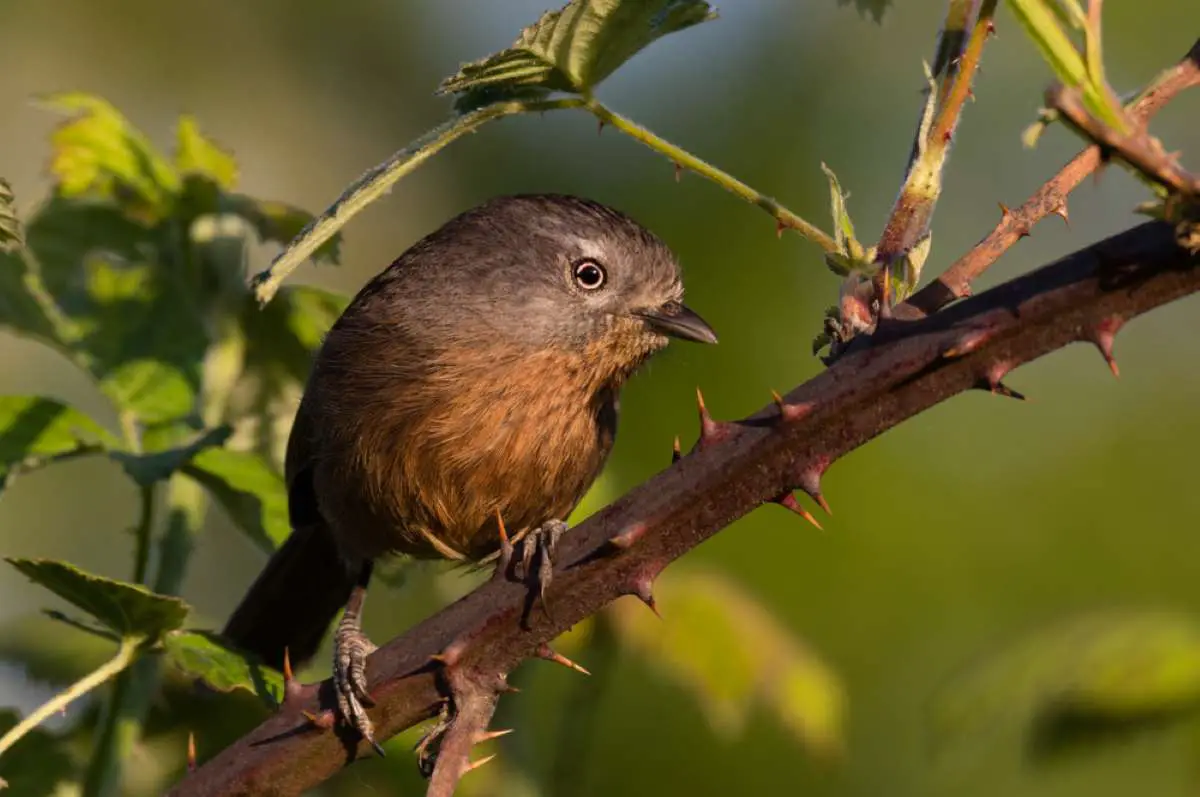The Wrentit is one of the only songbirds that sing throughout the year. It is much easier to hear the rapid whistling of the Wrentit than to find it hidden in the dense foliage it prefers to live in. The Wrentit does not migrate and lives on the West Coast of North America year-round.
The Wrentit lives on the Pacific Coast year-round. It prefers areas with dense coastal scrub and chaparral. Males and females mate for life. Read on to learn more about the magnificent Wrentit.
Wrentit History
The Wrentit (Chamaea fasciata) is a small songbird that lives in areas with dense foliage in the northwestern US. The Wrentit belongs to the Passeriformes order. It is challenging to see but common to hear along the Pacific Coast. Though a Wrentit’s common name suggests that it resembles both Wrens and Tits, it is unrelated to either bird species. In fact, it is not related to any other North American bird species.
It was previously classified as belonging to the Sylviidae, or the sylviid warblers. The Wrentit was also thought to belong to the family Timaliidae, the Old World Babblers. Its closest relatives live in Africa, Spain, China, and India. No one is certain of how the Wrentit ended up in North America. In 2019, a significant revision classified the Chamaea as close relatives of the parrotbill family, even though this bird species typically lives in Asia.
What Does The Wrentit Look Like?
The Wrentit is a small songbird with brownish-gray feathers. These birds weigh around half an ounce and are 5.9 inches long. Wrentits are plump birds with a straight brown, stubby bill like the Chickadee. They have a long tail. Their pale eye stands out from their darker feathers.
Sometimes the Wrentit is confused with the Bushtit, another common bird that shares the same area of the US. The best way to tell these birds apart is to look at their chests; the Bushtits have gray chests, while the Wrentits have paler pinkish chests.

What Does The Wrentit Eat?
Wrentits eat a variety of foods. They eat insects such as:
- Beetles
- Ants
- Larvae
- Spiders
- Caterpillars
Wrentits also enjoy:
- Elderberries
- Blackberries
- Laurel sumac
- Snowberries
During winter, they add poison oak seeds to their diet.
Where Does The Wrentit Live?
Wrentits live year-round along the West Coast, including northwestern California and Oregon. Their range includes Baja California and the foothills of the Sierra Nevada. The Wrentit is a sedentary bird, meaning it does not migrate. It may be the most sedentary North American bird, staying within 1300 feet of its birthplace.
Wrentits spend most of their time in areas with thick vegetation, including coastal sage scrub and chaparral. They prefer native plants, including coyotebush, California lilac, blackberry thickets, and manzanita. During breeding season, Wrentits move to oak woodlands and evergreen forests. They prefer these natural habitats over the common backyard and suburban habitats.
What Do Wrentits Sound Like?
Wrentits make a clear, whistling sound. Their notes repeat and get faster and end with a descending trill. Their sound has been compared to a ping pong ball falling off the table. The repeated notes sound like “wren—tit—tit-tit-tit-t-t-t.” Though they are difficult to spot, they are easy to hear because they sing often.
Both males and females sing year-round to claim territory and communicate with each other. They are especially vocal early in their breeding season. If they detect an intruder, such as the California Scrub-jay or a snake, they fly toward the predator while singing and holding their tails straight up. Research has indicated that songbirds’ vocalizations are affected by background noise.

Wrentit Nesting and Breeding Habits
Wrentits pair together between 30 and 40 days old and are monogamous for life. Males and females build cup-shaped nests together out of bark strips and spiderwebs. They line the nests with grasses, lichens, and other plant materials. Finished nests measure 3.5 inches across.
Males and females work together to incubate their eggs. Females care for the eggs at night, while males help at dawn and dusk each day. Incubation takes 11-18 days, and the young fledge around 15 days after hatching. Young birds remain with their parents for up to 40 days after leaving the nest. Female Wrentits lay 1-5 eggs at a time and have 1-2 broods per year.

